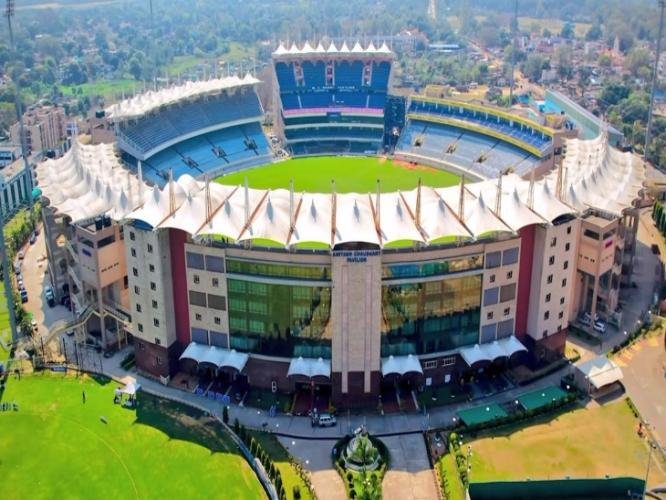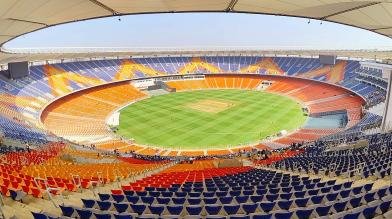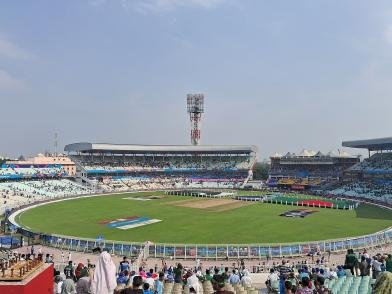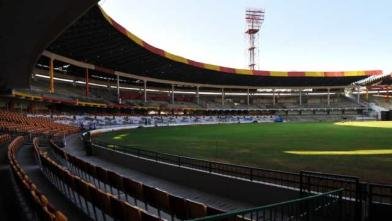❤️ A Cricketing Gem of Jharkhand
Nestled in the vibrant city of Ranchi, the JSCA International Stadium Complex is a shining beacon of Jharkhand’s cricketing spirit. Located in Dhurwa along a scenic four-lane highway, this modern venue is renowned for its balanced pitch, thrilling IPL encounters, and historic international matches. With its innovative design and passionate crowds, often energized by local hero Mahendra Singh Dhoni, the stadium is more than a venue—it’s a celebration of cricket’s legacy in India. Explore its rich history, unique features, and unforgettable moments below.
History of the Stadium
Inaugurated on January 19, 2013, the JSCA International Stadium Complex was built by the Jharkhand State Cricket Association (JSCA) to establish a world-class cricketing facility in Ranchi. Constructed on a 26-acre site within the Heavy Engineering Corporation (HEC) premises at a cost of INR 1.9 billion, it replaced the outdated Keenan Stadium in Jamshedpur after a dispute with Tata Steel. Designed by Kothari Associates Pvt. Ltd., the stadium aimed to elevate Jharkhand’s cricketing profile. Its first international match, an ODI between India and England, marked its global debut. The venue has since hosted IPL matches for Chennai Super Kings and is set to host T20 World Cup events in 2025.
Location and Accessibility
Located at Dhurwa, Ranchi, Jharkhand, India (Coordinates: 23.3100° N, 85.2745° E), the stadium is just 8 km from Birsa Munda Airport, a 10-minute drive via taxi (₹150–₹250) or auto-rickshaw (₹80–₹120). Ranchi Junction and Hatia railway stations, both 10–12 km away, are reachable in 20–25 minutes. Local buses and ride-sharing apps like Uber ensure budget-friendly access. Nearby landmarks include Birsa Zoological Park (5 km), Tagore Hill (7 km), and Ranchi Lake (6 km), with hotels like Radisson Blu (10 km) catering to visitors. Match-day traffic may require early arrivals.
Architecture and Design
Boasting a seating capacity of 39,000 to 50,000, the JSCA International Stadium features a shadow-free design, ensuring clear visibility until 4:45 p.m., even on the shortest day. Designed by Kothari Associates Pvt. Ltd., it includes a main field with nine pitches, a secondary ground with five pitches, and a practice arena with eight pitches. The balanced pitch offers pace and bounce for batsmen early on, with spinners gaining turn later. A membrane roofing system provides shade, and 76 corporate boxes offer premium views. The complex includes an indoor cricket academy, enhancing its modern appeal.
Famous Matches and Events
The stadium opened with a thrilling ODI between India and England on January 19, 2013, and has since hosted three ODIs, seven IPL matches, and Test matches like India vs. South Africa (2019) and India vs. Australia (2017). It was a home ground for Chennai Super Kings during IPL seasons, with Mahendra Singh Dhoni’s performances drawing massive crowds. The venue will host T20 World Cup matches in 2025. Beyond cricket, it has staged the Karbonn Jharkhand T20 League’s opening ceremony and Under-19 Women’s tournaments, showcasing its versatility.
Records:
- Highest Test total: Not explicitly documented, but India’s strong performances in Tests highlight its batting-friendly nature.
- Notable performances: Mahendra Singh Dhoni’s homecoming matches in IPL drew significant attention.
- Best bowling figures: Specific records unavailable, but spinners have thrived in later stages of matches.
Facilities
For Spectators:
- Comfortable seating across general, premium, and family sections with clear field views.
- Food stalls offering snacks to meals (₹80–₹200), though variety may be limited during smaller matches.
- Ample parking for thousands of vehicles, with congestion during IPL games.
- Clean restrooms, drinking water, and giant replay screens for engagement.
- Accessibility ramps for differently-abled fans.
For Players:
- Modern dressing rooms with cushioned seating.
- Indoor cricket academy with three pitches and eight practice pitches.
- Medical, physiotherapy, and recreational facilities (tennis, basketball, swimming pool).
For Media:
- Well-equipped media center with high-speed Wi-Fi.
- 76 corporate boxes with catering for VIPs.
Unique Features
The stadium’s shadow-free design and membrane roofing system ensure comfort and visibility. Flanked by East and West Hills, it offers scenic views, a rarity among Indian stadiums. Fan zones with giant screens, music, and cheerleaders create an electric IPL atmosphere. The indoor cricket academy with residential facilities nurtures young talent, while advanced floodlights ensure seamless night matches. Its eco-friendly design and proximity to the airport (8 km) make it a standout venue.
Fan Experience
The JSCA International Stadium is a fortress of cricketing passion, with fans describing it as a “home of Dhoni’s legacy” on X. The atmosphere during IPL matches, especially for Chennai Super Kings, is electric, with crowds roaring for every boundary. Reviews praise the scenic hill views, spacious seating, and festive vibe, though some note parking challenges during big games. A visitor on TripAdvisor called it “a vibrant cricketing paradise with unmatched energy.” The pleasant winter weather (November–February) enhances the match-day experience, making it a must-visit for fans.








